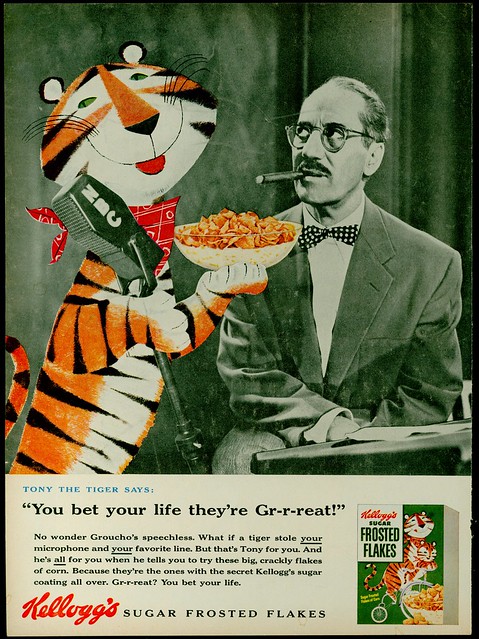
Arthur Rackham, the 4th of 12 children, was born in London on 19 September 1867. From 1879 he attended the City of London school. Popular amongst his peers and teachers, Arthur was otherwise academically unremarkable — he demonstrated something of a talent for drawing and won a number of prizes from Herbett Dicksee, the school drawing master.

During 1884 Arthur spent 4 months in Australia where he became inspired by his surroundings, producing many watercolour paintings and sketches of the landscapes. Upon returning to England, he enrolled at the Lambeth School of Art as an evening student. He sought work during the day to help fund his education and in 1885 began a job clerking at the Westminster Fire Office.
 |
| Fig A: 'A Fact,' Scraps Magazine, 1884 |
During his time at the office, Rackham continued to produce many drawings and watercolours, one of which was publicly exhibited in 1888 at the Royal Academe. He frequently contributed drawings to local magazines and newspapers, the first of which was published in Scraps magazine in 1884 (Fig A). Though this (admittedly rather crude) drawing lacked anything of the charm for which Rackham's later illustrations would become renowned, he was already beginning to demonstrate a keen eye for line and form.
 |
| Fig B: 'How a Bank was Robbed,' Westminster Budget, 1893 |
 |
| Fig C: 'The Dolly Dialogues,' 1894 |
Through Rackham's regular contributions to local magazines, he was able leave the fire office in 1892 after securing a position as graphic journalist for the Westminster Budget. Rackham provided many illustrations for articles and ran a frequent column in which he would caricature public figures. The demand for photorealistic and 'straight line' technical drawings was high, given the nature of the position, but Rackham was granted opportunities to deviate and work in a far looser, more whimsical manner for which he would later become renowned.
Rackham received a large number of commercial commissions during the last decade of the century, with many drawings published in travel brochures, newspapers and even several books — including an illustrated edition of The Dolly Dialogues (a feature previously run in the Westminster Gazette) in 1894.
Aside from his distaste of the field in general (he found the paper's deadlines too constraining for the sort of meticulous detail his work often demanded), Rackham's eventual departure from journalism was forced by means of practical necessity. The role of the artist in journalism was threatened to become obsolete with the impending introduction of the camera.
He hit the height of his fame at the turn of the new century — shortly following his marriage to fellow artist Edyth Starkie in 1903, 99 of his illustrations were published in Fairy Tales of the Brothers Grimm to great success. The final revised edition, published in 1909, contained an astonishing 40 coloured illustrations and 55 line drawings. By the time of his death in 1939, Rackham had illustrated more than 60 children's books, including Peter Pan in Kensington Gardens, Alice's Adventures in Wonderland, Aesop's Fables, The Night Before Christmas, Cinderella and American classic Rip van Winkle. Rackham's final book, the Wind in the Willows, was published posthumously in 1940.
Sources: Gettings, F., 1975.
Arthur Rackham. London: Macmillan.
Hudson, D., 1960.
Arthur Rackham: His Life and Work. 2nd ed. London: William Heinemann Ltd.
Arthur Rackham. 2011.
Arthur Rackham. [ONLINE] Available at: http://www.bpib.com/illustrat/rackham.htm. [Accessed 25 September 2011].
Arthur Rackham Biography. 2011.
Arthur Rackham Biography. [ONLINE] Available at: http://www.fairyworx.net/Arthur_Rackham.html. [Accessed 25 September 2011].











